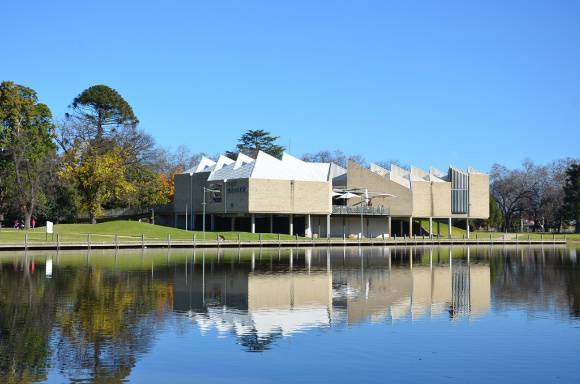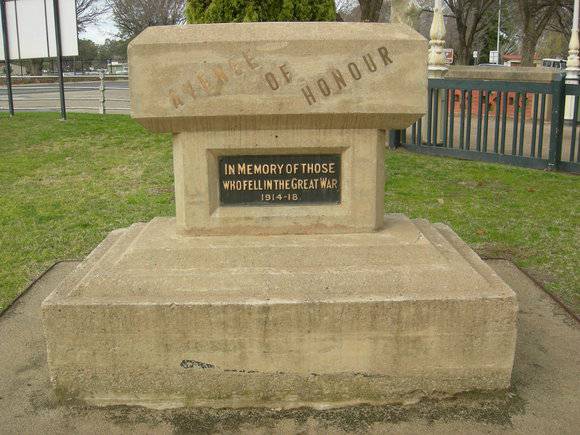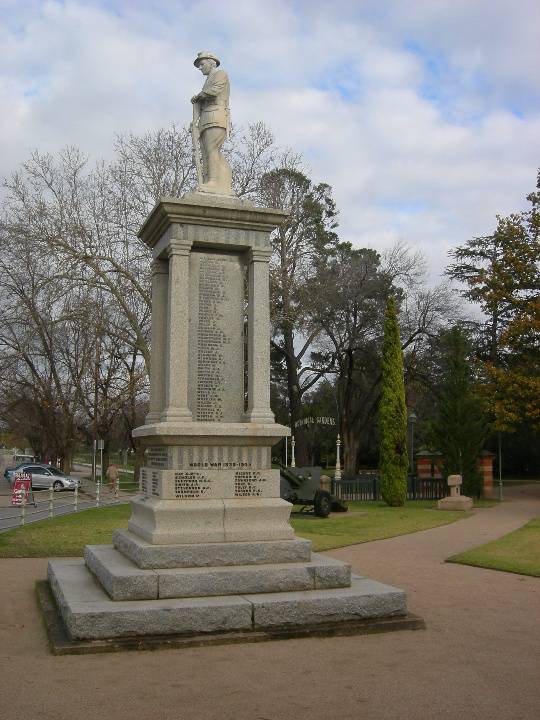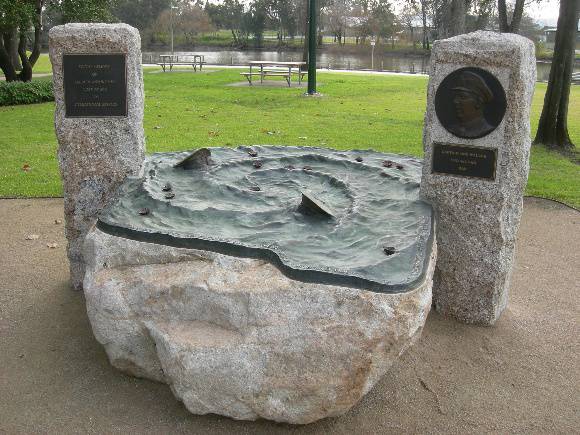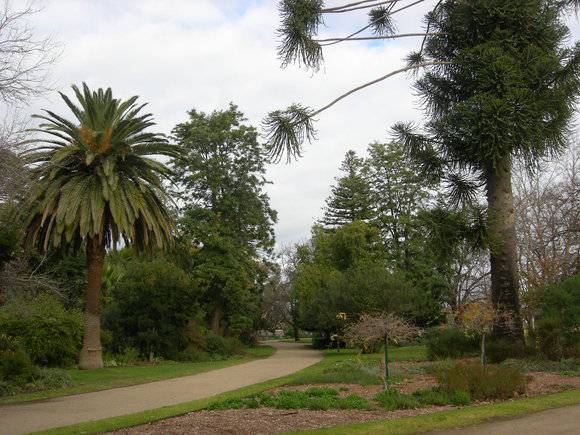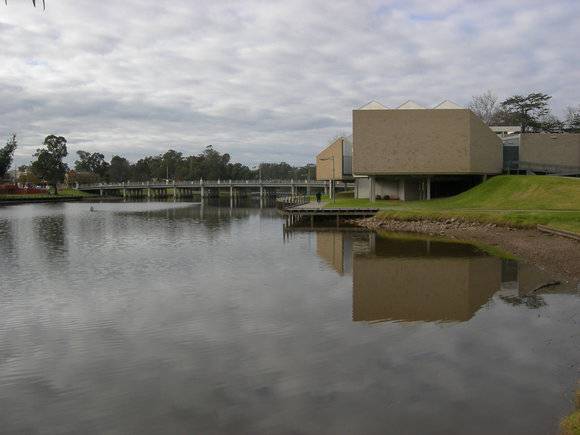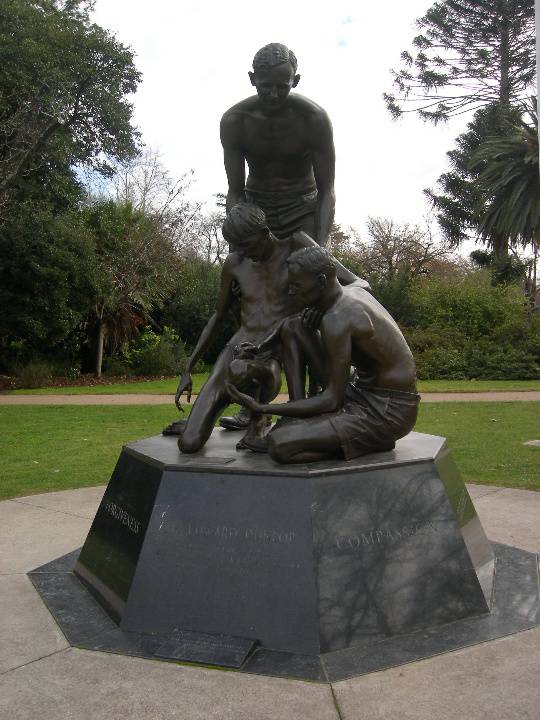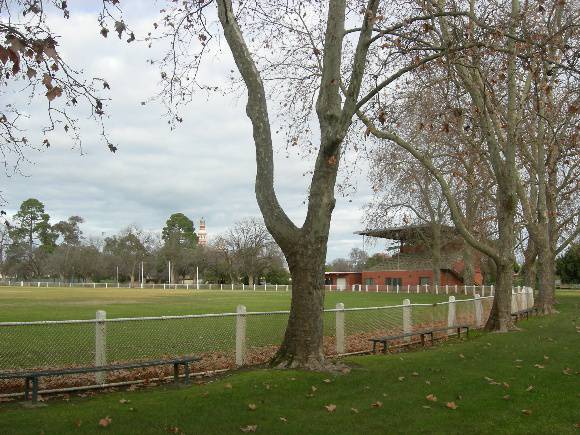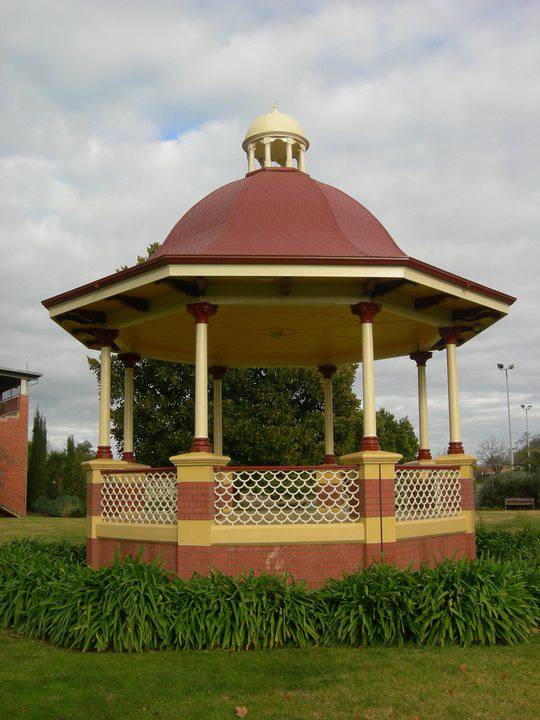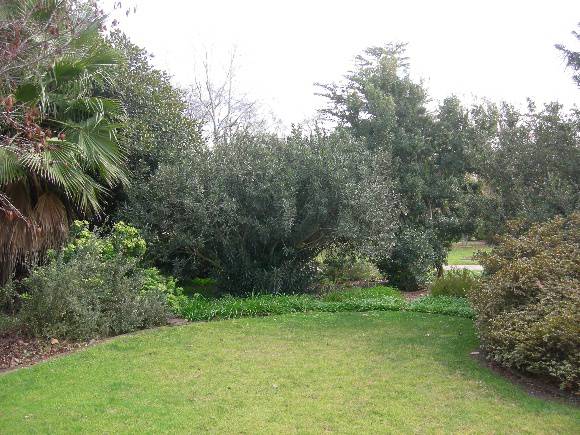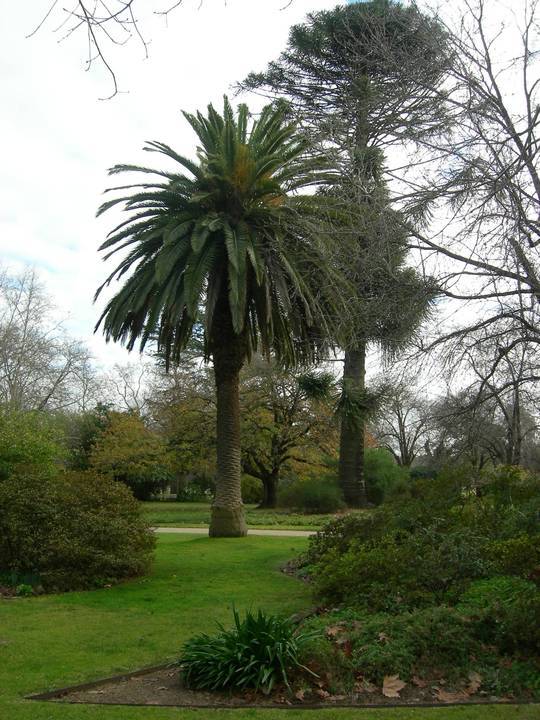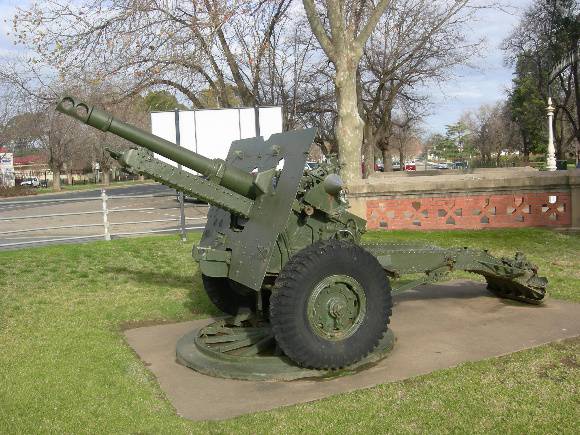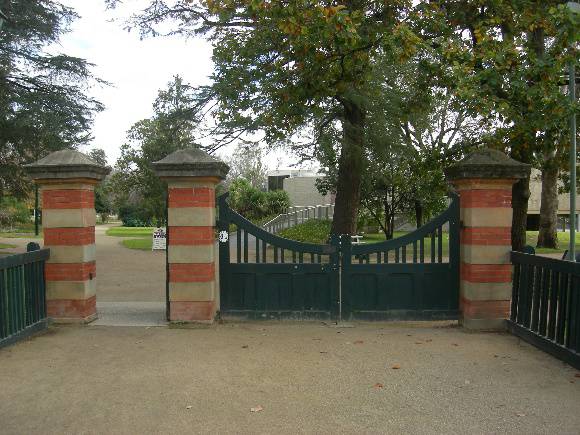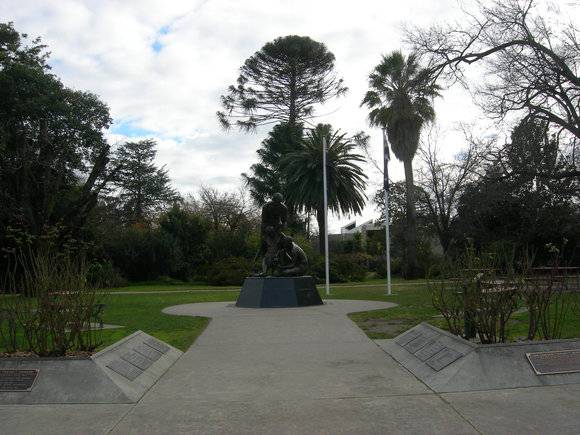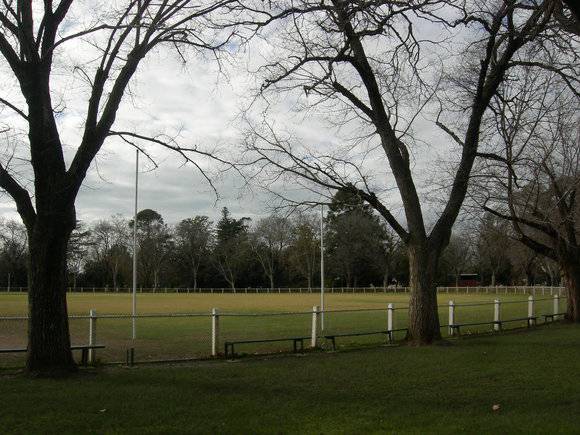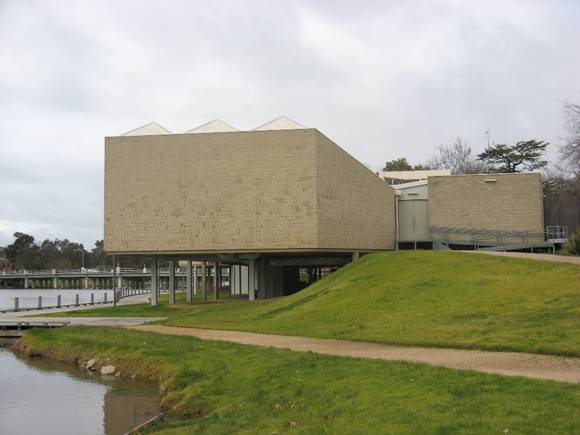| Back to search results » | Back to search page » |
|
BENALLA BOTANICAL GARDENS AND ART GALLERY
Statement of Significance
What is significant?
In 1859 land was set aside for 'cricketing and other purposes of
public recreation' with the cricket ground and recreation reserve
temporarily reserved on 6 October 1873. From 1882 the Council started
to gradually develop the reserve by constructing footpaths and
planting trees, but after community agitation for better facilities,
Alfred Sangwell was appointed as the first curator to design and
layout the gardens in 1886-7. Sangwell's plan shows a large central
oval, separated from ornamental beds on the north western and
south-eastern aspects by serpentine paths, sweeping lawns, shrubs and
flower beds typical of the gardensque style popular at the time. Some of the planting and path layout has been altered and several
elements associated with the early development of the area for
recreational purposes such as the croquet lawn and bowling club (1897)
have been relocated or removed. Remaining structures include the
grandstand (1963, replacing 1896 grandstand), tennis courts (c1880s)
and clubhouse occupying the northern area, an octagonal band rotunda
(1911), war memorial (1922), entrance gates (1911, with timber gates
reconstructed in 1989) on the eastern side. More recent additions
include the cannon, a large rose garden (1959) with substantial
renovations in 2004 and 2009, the rocket playground (relocated c1962),
and the Weary Dunlop Memorial statue (1996), a relocated Avenue of
Honour memorial and adjacent Hec Waller Memorial (2010). Besides the passive recreation normally associated with botanical
gardens, sport has been played continuously on the central oval since
the 1860s, together with tennis courts, a feature of the gardens since
c1880, and the former bowls and croquet clubs. Cultural events have
been held at the band rotunda since 1911. Since 1966 the Benalla
Botanic Garden's rose beds, established in 1959, have been a major
feature of the annual Benalla Rose Festival which attracts many
visitors and has led to Benalla being known as the Rose City. A major landscape feature was created in 1972 with the damming of the
flood-prone Broken River to form Lake Benalla which provides the
background for the Benalla Art Gallery, constructed in 1975, and a
board walk installed in 2001. The location of the Gardens adjacent to
Lake Benalla provides significant views from the Gardens across the
lake, the 'Monash' Bridge (H1043) and surrounding town streetscape. After overwhelming local support for its establishment in a
referendum in 1967, the Benalla Art Gallery was temporarily housed in
the memorial hall, until the present purpose-built gallery was
constructed. This was made possible by local resident, Laurence
Ledger, who offered to donate his collection of Australian art to
Benalla and contribute $75,000 towards the cost of a new building,
contingent on it being built on the present site across Lake Benalla
from his residence. Ledger also selected the architects, Munro and
Sargeant. The Council agreed to this proposal, committing $85,000
towards its construction and the State Government provided funding of
$170,000. Opened in 1975 by the Victorian Premier, Rupert Hamer, the building
contains two gallery spaces, one to house the Ledger Collection and
another larger, versatile and extensible space. To address the site,
the building is designed on north-east and north-west axes with a
linking foyer facing the lake and service facilities located to the
south. The complex steel framed structure, clad with ribbed concrete
block, is raised above the flood line of the lake. Distinctive
tetrahedral roof monitors allow the diagonal penetration of desirable
southern lighting to the gallery spaces, and non-rectangular planning
aids interior circulation and display. The current Gardens retain some of the original layout and mature
plantings such as the avenue of alternating Dutch Elms (Ulmus x
hollandica), purple-leaved Dutch Elms (Ulmus x
hollandica 'Purpurascens') and English Elms (Ulmus
procera) around the oval, with two inner sections of London
Plane trees (Platanus x acerifolia). Besides the
important rose gardens, Benalla Botanical Gardens has a collection of
New Zealand plants, salvias and asteraceae. Significant trees include
a Crow's Ash (Flindersia australis), three rare hybrid elms
(Ulmus 'Viminalis') the only known examples in Australia, and
two Yellow Gums (Eucalyptus leucoxylon). A Dutch Elm
Disease-resistant elm Ulmus 'Urban' was planted by the Hon.
Mark Birrell on 29 April 1995. Other significant trees include a
Crow's Ash (Flindersia australis) one of only three known
specimens to be planted in Victoria; three specimens of a rare elm
(Ulmus 'Viminalis'), the only known examples in Australia; and
two Yellow Gums (Eucalyptus leucoxylon). Other outstanding
trees include a Bunya Bunya Pine (Araucaria bidwillii), Turkey
Oak (Quercus cerris), Tulip Tree (Liriodendron
tulipifera), Canary Island Date Palm (Phoenix canariensis),
Canary Island Pine (Pinus canariensis) and Mexican Cypress
(Cupressus lusitanica). This site is part of the traditional land of the Yorta Yorta people.
How is it significant?
Why is it significant?
The Benalla Botanical Gardens are of historical significance for the
retention of much of the original gardenesque layout designed by
Alfred Sangwell in 1886-7, and are the only known example of his work
in Victoria. The design is unusual as it successfully combines a
recreation oval with a nineteenth century ornamental garden featuring
typical characteristics such as a formal entrance and gates, curved
paths, open lawns area planted with specimen trees and beds of more
intensive horticulture and a band rotunda. The Benalla Art Gallery is of historical significance as a
demonstration of the development of regional galleries in Victoria,
particularly in the 1960s and early 1970s when state government
funding fuelled growth in new public art galleries. It is of
significance as an outstanding display of community support with
residents voting overwhelmingly for the establishment of a gallery at
Benalla at referendum in 1967, and the resident Laurence Ledger
donating his valuable art works and money to fund the building. The Benalla Botanical Gardens are of aesthetic significance due to
their park-like character and vistas across the lake, and for the
design elements such as serpentine paths meandering through gardens
beds of flowers and shrubberies of various colours and textures set
into lawn against a backdrop of trees and built elements. The Art
Gallery, on the shores of the lake, adds to the picturesque qualities
of the place. The Benalla Botanical Gardens are of scientific (botanical)
significance for the collection of rare and unusual plants including
conifers and palms which provide a contrast to the numerous deciduous
species. These include a Crow's Ash (Flindersia australis), one
of only three known specimens to be planted in Victoria and three
specimens of a rare elm (Ulmus 'Viminalis'), the only known
examples in Australia. The Benalla Art Gallery is of architectural significance as an
outstanding example of a mid-1970s modernist building, located in
regional Victoria. Architects Munro and Sargeant received a Victorian
Architecture Award Citation for this Regional Gallery for North
Eastern Victoria in 1975 and its unique character continues to provide
the region with a distinctive identity.
The Benalla Botanical Gardens occupy a triangular site of
approximately 5.1 hectares bounded by the shore of Lake Benalla to the
north-east, Bridge Street to the south-east and the row of buildings
fronting Arundel Street to the north-west. The Benalla Art Gallery was
constructed in the Gardens in 1975, on the shore of Lake Benalla.
The Benalla Art Gallery and Botanical Gardens are of historical,
aesthetic, scientific (botanical) and architectural significance to
the state of Victoria.
Benalla Botanic Gardens are of historical significance as an
important example of a regional botanical garden, established in the
nineteenth century in response to the increased wealth of Victoria
with the discovery of gold and the desire to provide a place for
recreation and education in keeping with European trends.
Group
Monuments and Memorials
Category
Memorial


